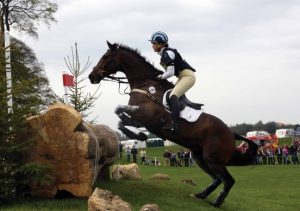
Equine High Impact Injury
Introduction

The load borne by each foot can be up to six times the body weight of the horse.
High impact injuries to equine feet and limbs are an all too common problem blighting many athletes’ career prospects or prematurely curtailing them. There are many and varied contributing factors leading to a long list of injuries, from obscure soft tissue damage – palmer foot pain to osteoarthritis; here we examine the forces through the digit during every day activities. If any negative element can be eliminated, that has to swing the balance in the horses’ favour and longevity.
The activity
Prolonged work on hard unyielding surfaces, rough ground, and even compacted sand surfaces test the horse’s physique and stamina. The faster the horse’s pace, the greater the impact; galloping, jumping and sharp changes in direction or speed obviously create the greatest impact; the momentary load borne by each foot amounting to anywhere between four to six times the weight of the horse.
The anatomy
The feet are the first to receive all this force torque and shock; this to a greater or lesser extent is transmitted up the digit into the limb. From the ground up, all the structures are designed to dissipate shock and utilize this energy for propulsion. Externally the healthy hoof is like a tough spring wrapped around the pedal bone (P3), its sole concave with the frog central and to the rear, the heels open and flexible to enable compression, expansion and three dimensional movement. Internally from the laminal suspension of P3, its flexible cartilaginous wing extensions on either side, to the compressible mass of the digital cushion, all protect and provide a buffer to the bone column. In addition, the arterial and venous volume of blood in the foot acts as a hydraulic damper. It is a far less rigid structure than most realize, and not at all surprising that it works most efficiently without a rigid shoe nailed on to it. This and the whole movement of the digit supported by the flexor tendons and suspensory ligament cushion the descending force against ground impact.
Close up movement analysis
The greater detail of this drama is not detected due to the high speed at which it happens; this is where high speed filming of the event played back in slow motion reveals the extreme extent of movement and finer points of what actually happens at the precise moment. This close up movement analysis can enlighten the viewer to subtle discrepancies in balance and conformational weaknesses.
As the foot impacts the ground a visible shock wave rises from the heels through the digit. Simultaneously the foot is compressed expanding to dissipate the sudden force upon it. At the extreme point of loading, for example when jumping, galloping or even during certain high propulsion dressage movements the fetlock will contact the ground. A fit horse with good conformation will repeatedly perform this exercise time after time without injury provided the surface worked on is suitable.
Good conformation

In extreme loading the fetlock will contact the ground.
A level and balanced foot, central under a straight limb works efficiently; when load is applied, it is borne evenly, as with the shock on impact, it is dissipated throughout the whole foot. The hoof has symmetry and is pleasing to the eye. When turning or moving over uneven ground one side of the hoof will contact the ground in advance of the other side; the free play in the joints will accommodate this to some extent, the heels of the hoof will ideally flex, damping the tension and compression effect on the joints. If the ground will yield, then the hoof will dig in, providing grip and reducing the force on the joints. Now let’s swing the balance in the other direction. If the ground is unyielding and the hoof shod with steel we have a quite different scenario; the hoof movement is restricted, transferring the bone crunching impact to the joints above. The shoe cannot dig in and is likely to strike up. Does this sound familiar?
Poor conformation and hoof imbalance
Wherever there is less than ideal limb conformation the hoof distorts due to any uneven forces and loading that it is subject to. Needless to say shock and loading within the foot and digit become concentrated into specific areas contributing to injury. A common example would be a toe out conformation, the medial side of the hoof and heel low. When viewed walking the foot would land on the lateral toe quarter then load to the medial heel as the fetlock descends over that quarter. The likely injuries would be an under run heel and medial corn, further palmer foot pain and possible collateral ligament strain for starters. This is a subject on its own not to be delved further into here.
Whilst predominantly heavier boned horses may suffer conditions such as equine osteoarthritis, ‘ringbone’, and ‘sidebone’, whereas the lighter, thoroughbred type is more likely be diagnosed with for example Navicular syndrome, palmer foot pain, or hoof cracks; that said none of these conditions are exclusive to type. Without exception all would benefit from reduced impact on their feet.
A good farrier who is prepared to take the time to identify these discrepancies, then skillfully trim and shoe to neutralise the negative effects of less than ideal conformation can help greatly to prolong the active working life of many horses.
This article by Andrew Poynton FWCF first appeared in Horse Health Magazine October/ November 2008.
